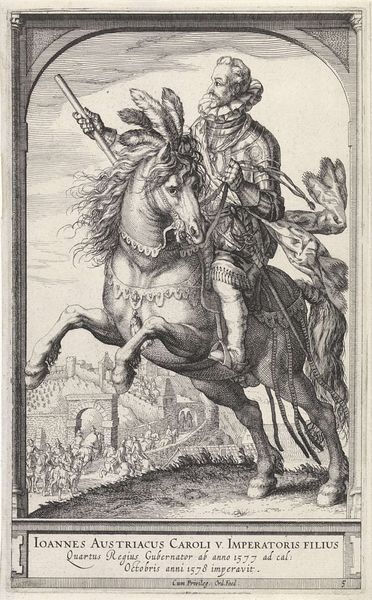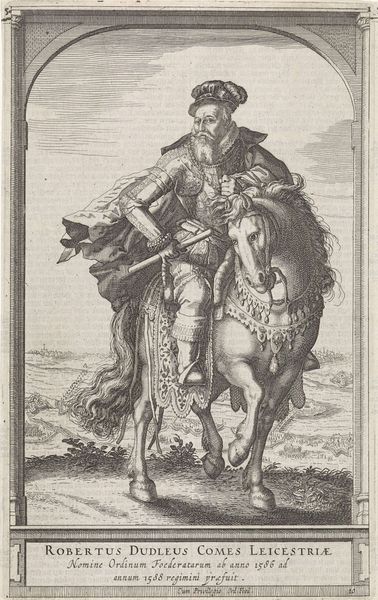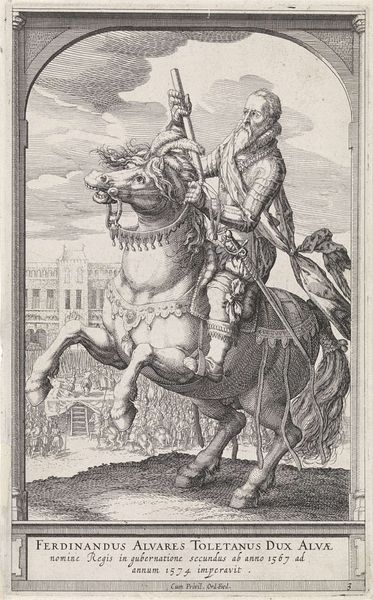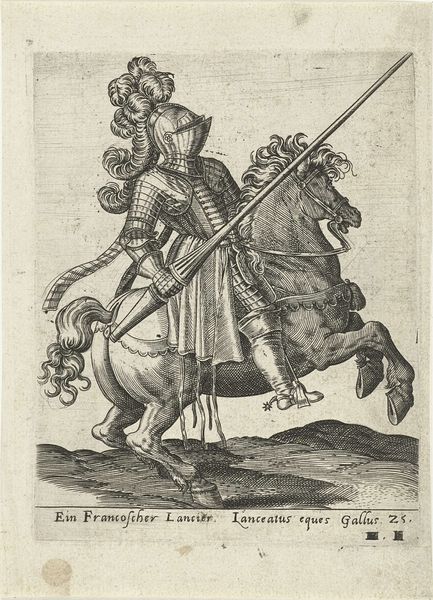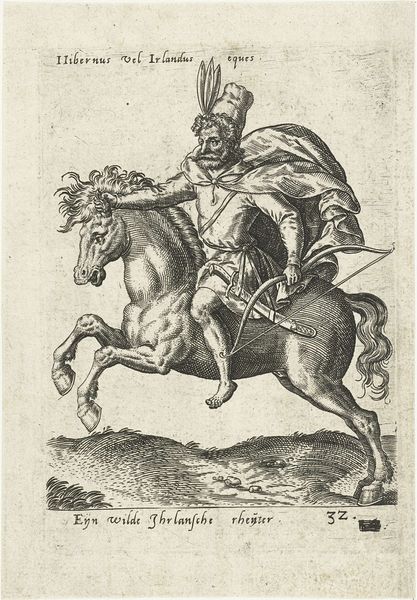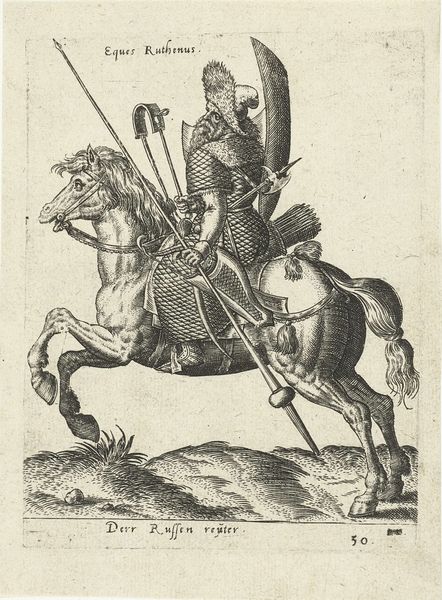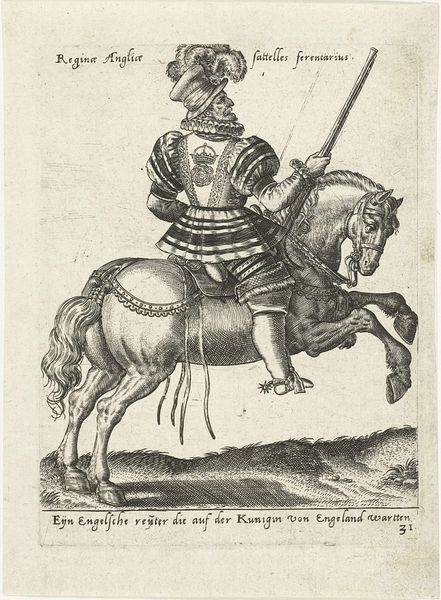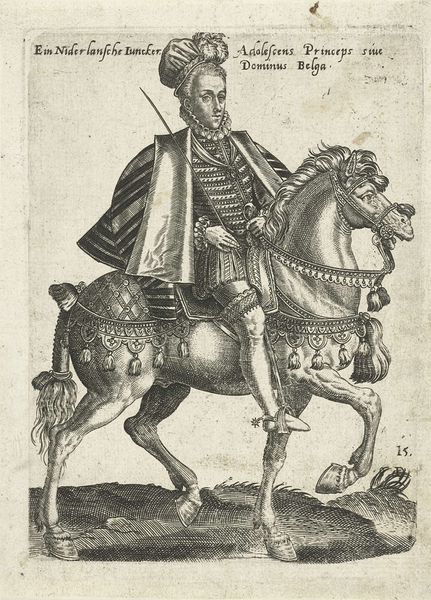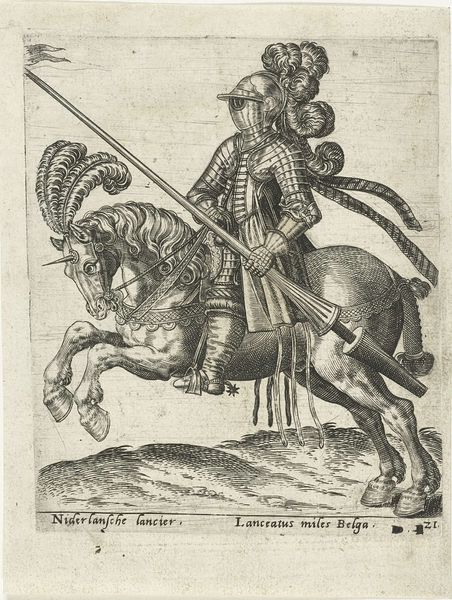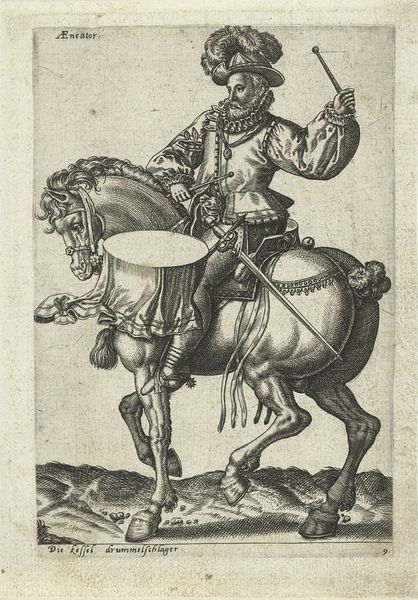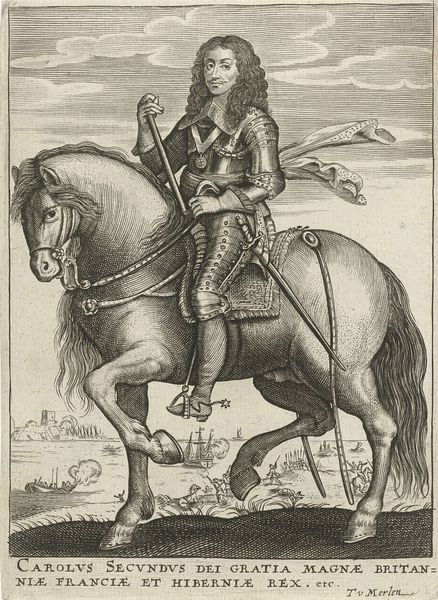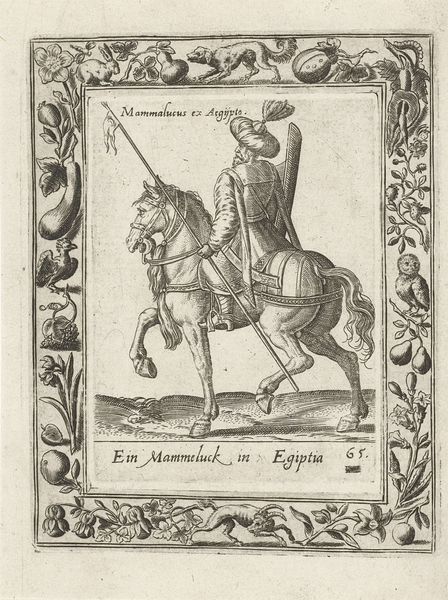
Ruiterportret van François-Hercule de Valois, hertog van Anjou 1591 - 1632
0:00
0:00
hesselgerritsz
Rijksmuseum
print, engraving
#
portrait
#
baroque
# print
#
landscape
#
history-painting
#
engraving
Dimensions: width 160 mm, height 260 mm
Copyright: Rijks Museum: Open Domain
Curator: Let's consider this engraving currently residing here at the Rijksmuseum, which presents a “Ruiterportret van François-Hercule de Valois, Hertog van Anjou.” Though unsigned, the print work dates sometime between 1591 and 1632. What are your initial thoughts? Editor: Stark. The tight detail lends a certain drama, almost foreboding. The rider and steed seem disconnected from the pitched battle raging in the background. Curator: The choice of rendering François-Hercule in this equestrian portrait echoes traditional depictions of power, doesn't it? We often see rulers and military leaders presented this way, it communicates dominance and control, deeply rooted in political symbolism. Editor: Indeed, but look at how his body is positioned in the work. The stiff posture combined with an elegant suit feels awkward. It presents a fragile version of masculinity. Curator: That friction you point out reflects his complicated political maneuvering, François-Hercule's ambition to rule the Netherlands, his position was fraught with difficulty. I believe that struggle resonates in the artwork itself. Editor: Absolutely. Even the landscape is intriguing. This chaotic backdrop makes the would-be Duke a more questionable figure than a steadfast hero. Is that rendering of an entire city almost dream-like, not quite real? Curator: Hessel Gerritsz has clearly situated this moment within a larger historical context, with the tiny warring armies adding to the tension felt by the imposing rider. Editor: Agreed, I’m not convinced the piece serves only to celebrate him. Doesn’t it expose anxieties regarding power, authority, and the brutal realities of war? It compels us to question traditional hero narratives. Curator: The way we interpret images from the past informs present realities, so what you’re saying is definitely a valid and useful viewpoint. Editor: Thinking critically about these representations gives us an opportunity to confront inequalities in history. The piece becomes less a tribute to the Duke, but an interrogation of power and its consequences. Curator: This has shifted how I appreciate the work and view the way social narratives play out in it. It certainly speaks to the layered and complex history embedded in these types of visual artifacts.
Comments
No comments
Be the first to comment and join the conversation on the ultimate creative platform.

